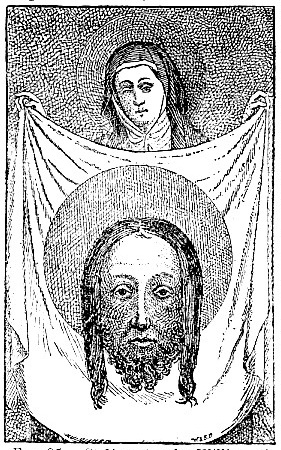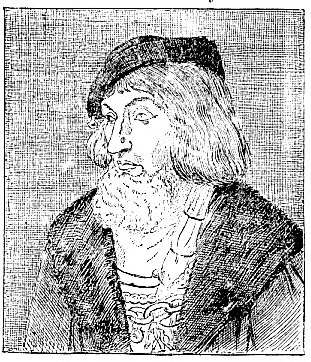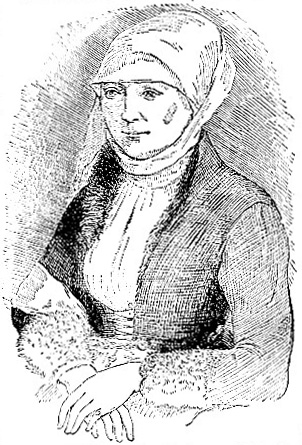German School of Painting
It was especially at Cologne in Westphalia and in the Rhine provinces generally that German painting was developed at an early time. William of Cologne, who died about 1378, painted panels with much delicacy and richness of colour (see fig. 25). A number of large and highly finished altarpieces were painted in this part of Germany during the 15th century, but the names of very few of the painters of that time are known.

Fig. 25 -- St Veronica, by William of Cologne. (National Gallery.)
Artists such as Schonganer, Von Meckene, Cranach, and others were more at home in the engraving of copper and wood than in painting, and to some extent the same might be said of Albert Dürer, an artist of the highest and most varied talent, who especially excelled as a portrait painter (see fig. 26).

Fig. 26 -- Portrait of a Senator, by Albert Dürer. (National Gallery.)
The Hans Holbeins, father and son, especially the latter, attained the highest rank as portrait painters; nothing can exceed the vivi truthfulness and exquisite workmanship of the portraitsd by the younger Holbein (see fig. 27), who also painted very beautiful religious pictures.

Fig. 27 -- Portrait of an Unknown Lady, by Holbein. (The Hague Gallery.)
Since his time Germany has produced few noteworthy painters. In the 19th century Overbeck was remarkable for an attempt to revive the long dead religious spirit in painting, and he attained much popularity, which, however, has no almost wholly died away.
Read the rest of this article:
Schools of Painting - Table of Contents


